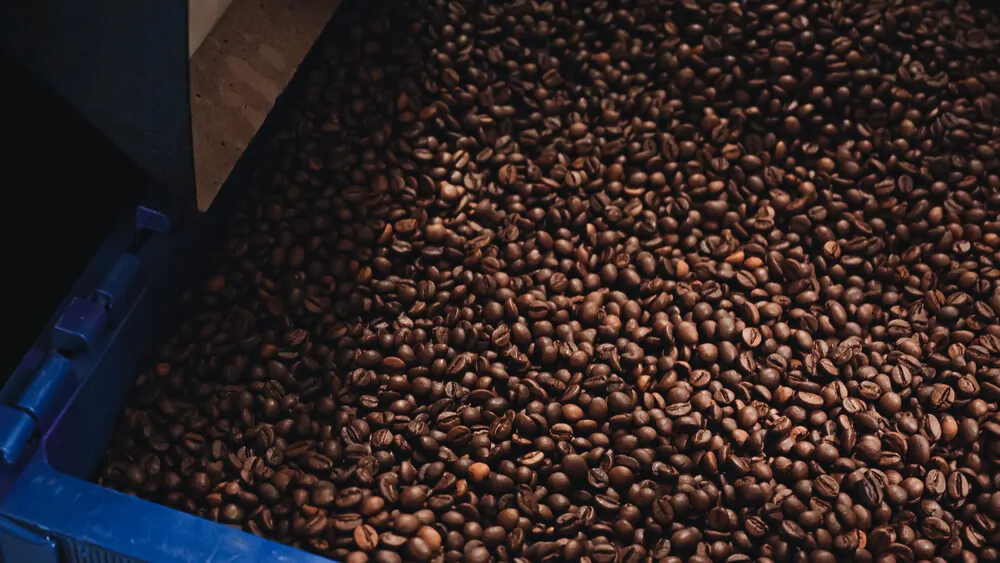Are you trying to decide between Brazilian vs. Colombian coffee beans? This article explores the differences and helps you make the right choice.

It’s no secret that different growing regions produce very different coffees. Even neighboring and nearby regions can have differences in the coffee they produce due to various factors. For example, South American coffees all have certain traits in common, but the coffees of Brazil and the coffees of Colombia have very distinct characters and flavors.
So which will win out? Read on to learn more about what makes these two coffee-growing regions so special.
South American Coffee: What You Need To Know
The three major coffee-growing regions of South America are Brazil, Colombia, and Peru. While other countries on the continent also produce coffee beans, these are the big three due to a combination of history and particular conditions. For example, coffee tends to like higher elevations, and all three countries boast some impressive mountains.
Setting aside Peru, Colombia and Brazil also have other growing conditions that allow bean crops to thrive, making for more productive coffee yields, which is a big part of why coffee plantations became so popular in the two countries. The coffees of South America tend to share certain characteristics: relatively simple flavor profiles and heavier body, ranging from 2% to heavy cream in texture.
What Brazilian And Colombian Coffee Have In Common

Both Brazilian and Colombian coffees tend to have simple flavor profiles, as opposed to complex ones. This means that there are typically few contrasting flavors, and instead, the flavors within a given coffee tend to all go together well. For instance, South American coffees often boast a rich note of caramel or honey, which tends to carry the overall flavor profile.
Brazilian and Colombian coffees also share a coffee varietal: Bourbon Arabica beans are a popular growing option in both locations. In addition, both countries also grow varietals descended from that particular sub-species of arabica coffee beans.
Brazilian Vs. Colombian Coffee: The Differences
The differences between Brazilian and Colombian coffee beans tend to go hand-in-hand with the differences in the geography and climate of the two regions. The flavor profile for Brazilian coffees tends to be a little on the heavier side, with low acidity and flavors of chocolate and spice mingling with the more prominent notes of caramel or honey.
Colombian beans are widely known for their acidity and for the elusive floral notes they tend to contain. Colombian coffees also tend to have a fruitier flavor, generally citrus–but occasionally red berries.
Another difference is the typical roasts for the two regions. Brazilian beans tend to be darker roasts, while Colombian coffee tends to be lighter in roast level. Again, the difference here plays to the strengths of the two growing regions and the beans’ flavors.
What’s Better About Brazilian Coffee?

Brazilian coffee is lower in acid and tends to be a dark roast, with the lightest roasts being closer to medium. The low acid and dark roast make the beans from this region great for those with sensitive stomachs and very adaptable across multiple brewing methods, both hot and cold. Cold brew made with Brazilian beans has a rich, satisfying flavor while still being refreshing.
What’s Better About Colombian Coffee?
Colombian coffees are higher in acidity and fruitier in flavor than Brazilian beans. They also have the benefit of being more well-known and easier to find. Colombian Supremo beans have a strong reputation in the specialty industry for very good reason: they produce a very well-rounded cup of coffee.
Colombian coffee also tends to be easier to find, even though Brazil produces more coffee. Brazilian coffee is more likely to end up in blends rather than single-origin coffee.
Who Should Get Brazilian Coffee?
If you are sensitive to the level of acidity or prefer darker roast coffee, Brazilian is the better option for you. Brazilian coffees also have a more balanced body, which works well across multiple brewing methods. If you want an adaptable coffee that works equally well across cold brew, french press, and drip brewing methods, Brazil is the coffee for you.
Who Should Buy Colombian Coffee?
If you want your coffee to have a lighter flavor and a heavier body, and you like a high acidity brew, Colombian coffee is the best choice for you. Colombian beans have an intriguing combination of flavors that you don’t find from other regions. Their popularity makes it easy to find bags of even the highest quality Colombian coffee at reasonable prices.

